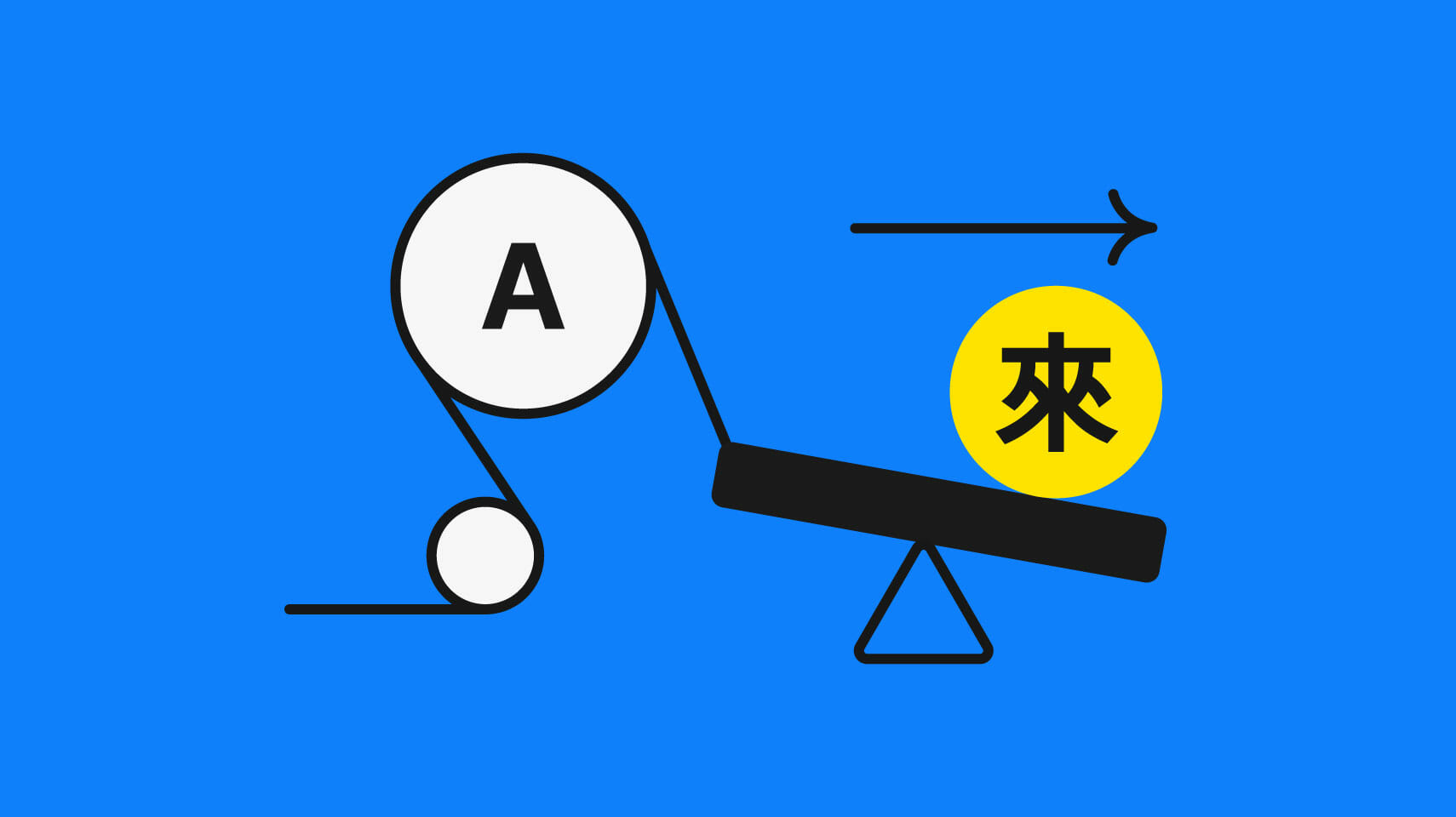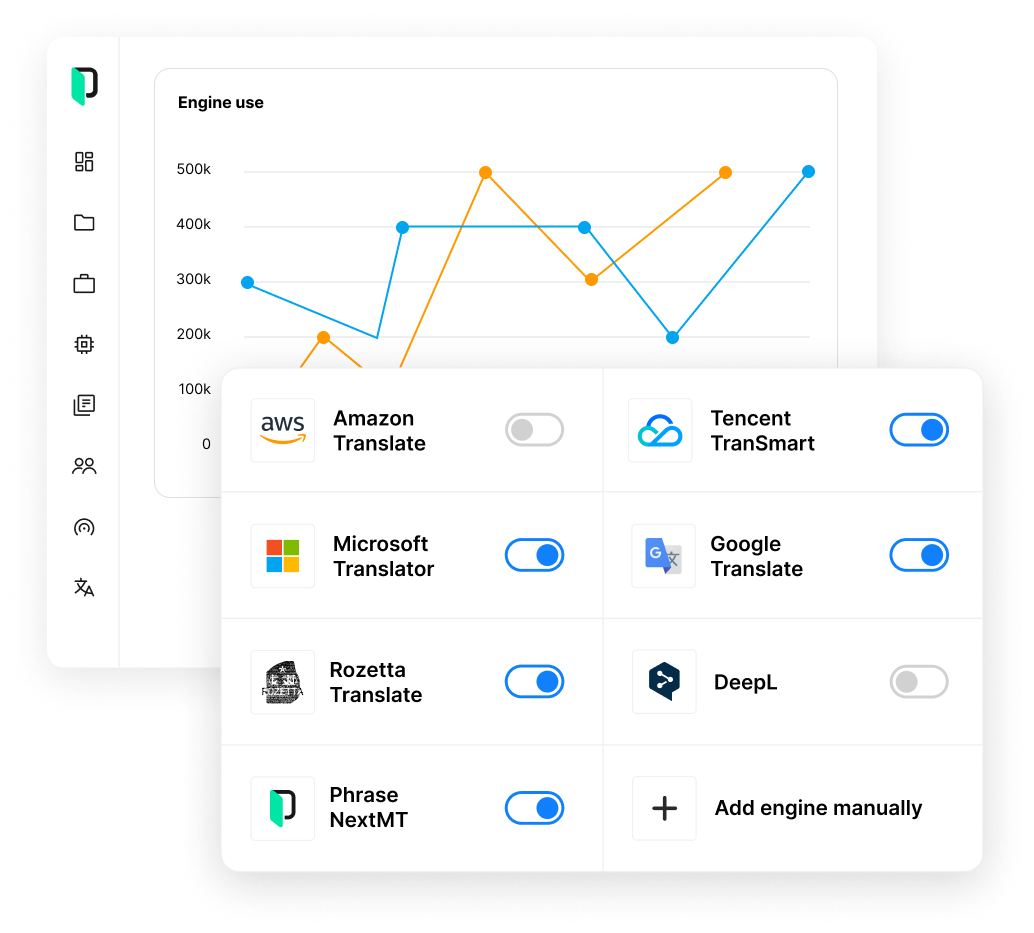Machine translation
Automatic Translation: What It Is, and How to Use It Effectively

In “2001: A Space Odyssey,” HAL, the computer, can speak and play chess. By 2001, computers could play chess at the grandmaster level, but even today, Siri isn’t quite as fluent as HAL.
Human language is proving more mysterious than chess to the silicon monster, which is reassuring to those of us whose chess game is a little short of grandmaster level.
Another type of computer language usage is automatic translation—one of the earliest applications of computer power, which still remains unexplored territory for many.
In this guide, we will look more closely at the meaning of automatic translation, its core use cases, and how it relates to machine translation.
What is automatic translation?
Automatic translation is the process of translating text from one language to another instantly, using a computer. It’s also referred to as machine translation (MT).
The latest stage of machine translation development, known as neural machine translation, can generate text that is usable in many contexts but still falls short of impeccable quality. If you’ve used Google Translate, you might have noticed an improvement in quality in recent years.
So, if you’re looking to automatically translate your website, you can input your source text into an automatic translation app and get an initial output, but the output will highly likely not be perfect.
Tools like Google Translate or DeepL might be able to provide something understandable, but the quality wouldn’t be sufficient for publishing on your website. This is where machine translation post-editing comes into play. More on that later.
Automatic translation vs machine translation: What’s the difference?
Automatic translation and machine translation are the same. Both terms stand for the process of transferring content between languages without any human input.
The roots of automatic translation
Translation emerged as one of the earliest applications of computing power, beginning in the 1950s with the renowned Georgtown-IBM experiment. However, the task turned out to be much trickier than what early computer scientists had anticipated. It demanded way more data processing ability and storage than the early machines could handle.
It wasn’t until the early 2000s that the software, data, and hardware caught up to do basic automatic translation. Early developers relied on statistical language databases to “teach” computers how to translate text. However, this teaching process was quite hands-on and labor-intensive. Plus, whenever they wanted to add a new language, it meant going back to the drawing board.
Today’s scene in automatic translation
In 2016, Google shook things up in the language industry by adopting a new approach to automatic translation. Using neural learning, Google trained its translation engines with the help of artificial intelligence.
This new method proved much faster and more efficient compared to Google’s statistical MT system, with the quality of translations showing impressive improvements as they put it into action.
In fact, neural machine translation worked so well that Google made it its main game plan, and other big players like Microsoft and Amazon quickly jumped on board as well. The rising quality of translations made automatic translation an indispensable tool in the world of language and communication.
Nowadays, loads of translation and localization tech solutions come with built-in automatic translation features. This helps businesses tackle the growing challenge of breaking down language barriers in the global marketplace.
What are the benefits of automatic translation?
It might be fair to say that automatic translation approaches the standard of human translation asymptotically. Far better than it used to be, under its latest form, neural machine translation, it’s no longer prone to risible errors. It can be trained: As you generate more output, your MT engine can learn and improve.
For optimal outcomes, businesses and language service providers should consider using machine translation post-editing. This process combines the accuracy of human translation with the speed of machine translation and is playing an increasingly important role in shaping the evolving landscape of the translation profession.
Greater speed
Through ongoing advancements in machine learning, automatic translation has achieved even greater speed and efficiency. Not only can it translate extensive content instantly, but it also continuously improves its capabilities as more content is processed.
Improved accessibility
Established machine translation providers now support up to 100 languages, and sometimes even more. This means translations can smoothly reach multiple markets at once, benefiting both businesses and customers by overcoming language barriers and making content, products, and services more accessible worldwide.
Enhanced cost-effectiveness
The combination of rapid processing and an increasing number of available language pairs makes automatic translation a cost-effective solution. The initial translation process is swift, and translators then ensure the content is accurately tailored for various target markets, saving both time and money.
How to use automatic translation on your website
Using automatic translation on your site will greatly depend on the language combinations you need and the type of content you have.
The effectiveness of automatic translation is influenced by the availability of extensive linguistic data for widely spoken languages, enabling more accurate conversions. That’s why for popular language pairs, such as translating between English and German, you can expect better results compared to less common combinations like translating from Swahili to Icelandic.
When it comes to the type of content, technical and legal texts will benefit more from automatic translation, while customer-facing marketing content may not fare so well. In general, you can follow these 3 key rules when you need to decide on translating text automatically:
Employ automatic translation for simple, unambiguous content
- Low-visibility or low-traffic content, such as internal documentation, website footers, social media posts for sentiment analysis, etc.
- Repetitive technical content that doesn’t need to be 100% accurate, just actionable, like instruction manuals
- User-generated content like product reviews, for which consumers generally expect low quality
- Quickly perishable content, like chat or email support messages, customer inquiries, etc.
- Large bulks of content with a short turn-around, such as hundreds of product descriptions that need to go live quickly
- Frequently amended content like feature and information updates
Apply light or full post-editing for more delicate content
- Product titles: They are highly informative and concise, they tend to contain proper names and polysemous words, and their word order is usually relatively free, which can cause ambiguity.
- Translations between language pairs of dissimilar syntax, like Japanese and Spanish, because the reordering of words and phrases to well-formed sentences becomes more challenging for machine translation engines.
- Product descriptions: They need to be well-crafted and clearly state the product’s features or benefits without room for ambiguity.
- Content of medium visibility that needs to be as accurate as possible: knowledge base, FAQs, alerts, etc.
- Back-end meta information such as image alt texts and captions: While their visibility is low, a human needs to ensure that the target-language keywords are present.
Rely on human translators for transcreation when branding and culture matter
- Homepages
- Advertising landing pages
- Blog posts
- Newsletter campaigns
- Press releases
- SEO content
- Print advertising, etc.
Make the most of automatic translation
A solid understanding of automatic translation puts you in a position to assess your options for the best machine translation software.
For example, Phrase TMS, the enterprise-ready translation management system within the Phrase Localization Platform, makes it effortless for growing companies to leverage machine translation. Organizations achieve an unprecedented ability to enter new markets more quickly and efficiently.we will look more closely at the meaning of automatic translation, its core use cases, and how it relates to machine translation.
Phrase TMS users can employ a dedicated machine translation add-on, Phrase Language AI, to implement MT into their translation workflow with fast and cost-effective translations that don’t compromise on quality.

Phrase TMS includes MT engines from leading providers and can auto-select the optimal one for your content
Fully embedded into Phrase TMS, the advanced MT capabilities that come with Phrase Language AI allow you to:
- Start translating immediately with no developer time or effort using fully managed MT engines from leading providers like Google, Amazon, DeepL, or Microsoft.
- Add any of the 30+ supported generic and custom engines manually if you ever prefer to use a specific MT engine.
- Enjoy unlimited machine translation for post-editing workflows so linguists can work more efficiently.
- Work with the best engine—auto-selected, based on your language pair and content type.
- Automatically filter out content that shouldn’t be machine-translated.
- Delegate quality testing, legal and security evaluation, setup, and payment of machine translation engines to dedicated machine translation experts on the Phrase team.
- Leverage your translation memories to increase translation quality by up to 50% with Phrase NextMT—the first TMS-ready MT engine.
- Ensure the MT engines use your preferred terminology with the correct morphological inflection—reducing post-editing effort.
- Preserve formatting and placeholder tags from source to target content automatically.
- Get a score for each machine-translated segment, based on past performance data, to post-edit only where needed.
- Achieve up to 55% cost savings with MTPE compared to human translation.
Discover advanced MT capabilities within Phrase TMS and push automatic translation to the next level with our enterprise-ready solution.
Unlock the power of machine translation
Discover advanced machine translation management features within our enterprise-ready TMS and create new business opportunities worldwide more quickly and efficiently.






